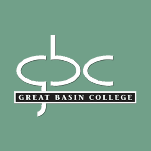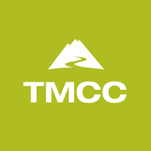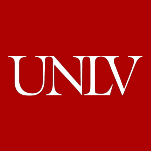
Retirement Program – Frequently Asked Questions
The Chancellor recently announced enhancements to the NSHE Retirement Plan. This Frequently Asked Questions provides answers to some of the questions being posed now, and those received previously through interactions with the NSHE community during the review process.
RPA (401a)
The RPA is funded on a monthly basis through payroll. Employees are required to contribute 17.50% of compensation, and your Insitution will also contribute 17.50% of your compensation. Employee contributions will be deducted from your salary on a monthly basis and sent to TIAA on your behalf. Generally, you should see both the your contribution and the employer contribution post to your account at TIAA within three days of payday.
Faculty employees or professional staff employees of all NSHE institutions, who are employed on an “A’ or ‘B’ contract of no less than 50% full time equivalency. Eligible employees do not include any employees who have an active Nevada PERS account.
Mandatory retirement plans are specific to your employment classification, so if a professional staff employee changes departments, but continues as a professional staff member, as long as your FTE is 50% or greater you will continue to participate in the RPA. If however a professional employee switches jobs into a Letter of Appointment, then eligbility for the RPA ceases and that employees would be enrolled in the FICA alternative. If you are considering a change in your employment classification, please reach out to the HR department at your Insitution and ask which mandatory retirement plan you would be eligbile for in the new postion.
Yes, a participant is able to request a loan from their RPA funds.
The contribution rates for the Retirement Plan Alternative are set via the Nevada Revised Statute 286.808. For fiscal year 2024 and 2025, mandatory employee contributions are set at 17.50% of compensation and the employer contribution is also 17.50% of compensation.
As of 2025, the annual contribution limit is for the RPA is $350,000. *If you were hired on or after January 1, 1996, your annual contribution limit is $350,000. If you were hired and continually employed before January 1, 1996 your annual contribution limit is $520,000.
You get to decide where your money is invested. You can change your investment choices whenever you want.
If you do not enroll in the Plan or choose an investment option for your contributions, contributions will be automatically invested in the plan’s default investment option. The default investment option is a Target Retirement fund based on the date closest to when you turn 65. This default fund will stay in place until you make a choice about how you want your funds to be invested.
You are eligible to receive distributions from the Plan when one of three things happens: you stop working for NSHE, you reach the age of 62, or you pass away. To get the money, you need to fill out a request online with TIAA. NSHE then confirms your status. You will receive payments as soon as possible after your eligibility has been verified.
No, contributions to the plan from a previous plan can not be rolled over.
Yes, you are able to take a loan from your contributions if you are eligible. If you are eligible, you can take a loan of $1,000 up to $50,000 or one-half of the value of your account.
There are fees associated with taking out a loan from the Plan, such as a loan origination fee, a maintenace fee and a processing fee. The processing fee is $50 is assessed in order to cover the additional administrative costs associated with complying with Internal Revenue Service regulations concerning retirement plan loans. The processing fee can be arranged to be deducted from your paycheck.
If you default on a loan, you are not permitted to take another loan from the plan.
Yes, if you are at least 62 years old, you are eligible to receive a distribution through an in-service distribution request.
Yes, if you have been employed with NSHE for less than five years, you will receive both your contributions as well as NSHE’s contributions.
No, you can however roll your old 401(k)s into the NSHE Supplemental 403(b) plan.
No, contributions are deducted from paychecks. Once all funds are distributed from the entire account you can no longer continue to make contributions.
403(b)
Yes, The supplemental 403(b) is a voluntary plan that provides you with an opportunity to supplement your mandatory contributions to the RPA, the Medical Resident/Postdoctoral Scholar Plan, or NVPERS to build a larger retirement nest egg than you would otherwise be able to build.
You set up your 403(b) contributions in Workday. You have the ability to choose contributions based on a specific amount or by percentage. The advantage of choosing a percentage is that when your salary increases, the 403(b) contribution increases as well. Check out the Change Retirement Savings Guide for more information on how to make the changes on Workday
A participant can change their contributions as often as they would like. Check out the Change Retirement Savings Guide for more information on how to make the changes on Workday
As of 2025, the limit on 403(b) contributions is $23,500 for employees who are less than 50 years of age and $31,000 for employees who are age 50 or over at the the end of the calendar year.
Participants have the option to choose pre-tax or post-tax contributions for their 403(b).
If you choose a pre-tax deduction, your current taxable income is lowered by the amount of your deferral and you will pay income tax on you withdrawals at retirement.
Yes, you can roll over your 401(k) from a previous employer into your 403(b).
Yes, you are able to take a loan from your contributions if you are eligible. If you are eligible, you can take a loan of $1,000 up to $50,000 or one-half of the value of your account.
No, after you default from a loan, you are no longer permitted to take another loan from the Plan.
If you do no enroll in the Plan or choose an investment option for your contributions, contributions will be automatically invested in the plan’s default investment option. The default investment option is a Target Retirement fund based on the date closest to when you turn 65. This default fund will stay in place until you make a choice about how you want your funds to be invested.
You’re eligible to receive a distribution from the plan upon reaching the age of 59 1/2, retirement, disability, termination of employment, or death.
In general, if you die before distribution of your account, the remaining balance will be paid to the beneficiary designated by the participant. You can set up your beneficiary in the TIAA portal.
Yes, you can receive a financial hardship distribution from your account if the plan administrator determines that you have an immediate and heavy financial need and the distribution is necessary to satisfy that need.
Medical and Dental Resident/Postdoctoral Scholar Retirement Plan
The Medical and Dental Resident/Postdoctoral Scholar Retirement Plan is funded on a monthly basis through payroll. Employees are required to contribute 6.2% of compensation, and your Institution will also contribute 6.2% of your compensation. Employee contributions will be deducted from your salary on a monthly basis and sent to TIAA on your behalf. Generally, you should see both the your contribution and the employer contribution post to your account at TIAA within three days of payday.
No, you are not permitted to take a loan from this plan.
You are typically eligible to receive a distribution from the plan upon reaching retirement age (59 1/2) or upon meeting other specified criteria, such as disability or termination of employment.
No, financial hardship distributions are not permitted in this plan.
If a former employee is reemployed and satisfies the eligibility requirements for participation in the plan, they become a participant in the plan again.
If an eligible employee fails to return the required enrollment and investment election forms by the last day of the month in which they become an eligible employee, they will automatically be enrolled in the plan with a default investment option. The default investment option is a Target Retirement fund based on the date closest to when you turn 65. This default fund will stay in place until you make a choice about how you want your funds to be invested.
A participant ceases to be a participant in the plan when their account is fully distributed.
Yes, a participant can direct the investment of his or her accounts in the plan.
The distribution options available to a participant under the plan may include a lump sum payment, installment payments, or an annuity.
415(m)
A participant automatically participates in the Excess Benefit Plan when the contributions to the 401(a) Plan have reached the maximum allowable benefit. The maximum allowable benefit being $350,000 if you were employed after 1/1/96 and $520,000 if you were employed before 1/1/96.
An excess contribution is the contribution made by the employer for a 415(m) participant to the Excess Benefit Plan, which is equal to the contributions that would have been made to the 401(a) Plan but could not be made because of the application of Code Section 415(c). The employer makes the Excess Contribution.
No, a 415(m) Participant cannot elect to defer compensation under the Excess Benefit Plan or make employee pre-tax or after-tax contributions to it.
Yes, a 415(m) participant can direct how their 415(m) account is invested.
Upon termination from employment for any reason other than death, participants in the 415(m) plan shall receive their vested account funds in a single cash lump sum payment. Additionally, individuals are mandated to take a full cash distribution within 60 days following separation from service.
Distributions for a 415(m) participant who is terminated from employment must commence as soon as practicable, but not later than the sixtieth (60th) day following termination of employment.
If the Administrator is in doubt concerning the correctness of any benefit payment under the Excess Benefit Plan, they may suspend payment until satisfied as to the accuracy of such payment.
If a 415(m) Participant makes a written claim for benefits under the Excess Benefit Plan to the Employer or Vendor, and the written request is denied, the Employer or Vendor shall provide a written denial to the 415(m) Participant within a reasonable period of time. The denial must include the specific reason for denial, the provisions of the Excess Benefit Plan and/or Funding Vehicles on which the denial is based, and how to apply for a review of the denied claim.
The Excess Benefit Plan shall terminate automatically on termination of the 401(a) Plan. Following such termination, all 415(m) accounts shall be distributed in accordance with the applicable provisions of the plan.
457(b)
All current employees of the State of Nevada, including Higher Education, are immediately eligible to participate in the Plan. Seasonal and temporary employees are also eligible.
A governmental 457(b) deferred compensation plan (457 plan) is a retirement savings plan that allows eligible employees to supplement any existing retirement and pension benefits by saving and investing pre-tax dollars through voluntary salary deferral. Contributions and any earnings on contributions are tax-deferred until money is withdrawn. Distributions are usually taken at retirement when many participants are typically receiving less income, and may be in a lower income tax bracket than while working. Distributions are subject to ordinary income tax.
You may want to participate if you are interested in saving and investing additional money for retirement and/or reducing the amount of current federal income tax you pay each year. Your Nevada Deferred Compensation Plan can be an excellent tool to help make your future more secure. View Your Plan…Your Future presentation for more information.
Yes. But only approved balances from an eligible governmental 457(b), 401(k), 403(b) or 401(a) plan or an Individual Retirement Account (IRA) may be rolled over to the Plan.
Qualifying distribution events are as follows: retirement (including retirement due to permanent disability); unforeseeable emergency (as defined by the Internal Revenue Code and your Plan’s provisions); severance of employment (as defined by applicable Internal Revenue Code provisions); attainment of age 72 death (your beneficiary receives your benefits); in-service transfer to purchase service credit.
Participants are not required to take a distribution until they are 72 and can leave their account balance in the Plan until that time, even if a qualifying event has occurred.
All distributions are subject to ordinary income tax unless it is directly rolled over to another eligible plan that accepts rollover or IRA or the distribution is used as an in-service transfer to purchase service credit.
Periodic payments, fixed annuity payments, partial lump sim with remainder paid as periodic payments, lump sum. Roll over your account balance to an eligible governmental 457(b), 401(k), 403(b) or 401(a) plan or to an IRA.
You may request a transfer from your NDC account to Nevada PERS for service repurchase or payment while you are still working. This is a non-taxable transfer. To determine eligibility and cost, please contact Nevada PERS 1 (866) 473-7768.
You must provide proof of financial hardship based on an unforeseen emergency. Strict federal guidelines determine whether or not your request will be approved.
Your designated benificiary(ies) will receive the remaining value of your account, if any. Your beneficiary must contact a Voya Financial Representative to request distribution.
The Plan’s recordkeeping, compliance and administrative costs are paid for by participants. A per-account cost of $10.25 is assessed quarterly on all participant accounts with a total balance of $1,000 or more, regardless of how they are invested. The $10.25 charge will show as a line item on your quartley statement. Each of the investment options offered by the Plan has a fund operating expense. In addition, some mutual fund companies share fund revenue with the Plan’s contracted recordkeeper, Voya Financial. The fee amounts vary based on the investment option and are deducted directly from the fund’s daily price. Any revenue received by the contracted recordkeeper from the mutual fund company that is in excess of the recordkeeping costs is credited back to participant accounts and noted as a line item on your quarterly account statements. For a complete description, please refer to the fund prospectus or log into your account at nevada.beready2retire.com.
The fee structure allows participants to keep a greater proportion of their investment dollars by applying the same cost regardless of the investment options they chose. It also ensures that the cost of administering the Plan is shared equitably by all participants.
NV PERS
Your service credit is multiplied by the service time multiplier (2.5% for each year completed prior to July 1, 2001 and 2.67% for each year completed on or after July 1, 2001). The total percentage earned is then multiplied by your average compensation.
Members enrolled in PERS on or after January 1, 2010 through June 30, 2015 receive 2.5% for all service earned in the system.
Members newly enrolled in PERS on or after July 1, 2015 receive 2.25% for all service earned in the system.
The change became effective July 1, 1985. Members enrolled in PERS before July 1, 1985 may still receive up to 90% of their average compensation when they retire. Those hired on or after July 1, 1985, may earn a maximum of 75% of their average compensation when they retire. The percentage is calculated for each member based on the years, months and days of service they earn while employed with a Nevada public employer in a PERS eligible position.
Service credit earned before July 1, 2001, will be calculated using the 2.67% multiplier. Service credit earned on or after July 1, 2001 through June 30, 2015 will be calculated using the 2.5% multiplier. Service credit earned on or after July 1, 2015 will be calculated using the 2.25% Members may reach the 75% Service Time Factor before completing 30 years of service.
Members enrolled in PERS on or after January 1, 2010 through June 30, 2015 receive 2.5% for all service earned and are not entitled to the 2.67% Service Time Factor.
Member newly enrolled in PERS on or after July 1, 2015 receive 2.25% for all service earned and are not entitled to the 2.67% Service Time Factor.
Member Statements are issued in yearly cycles for each of the public employers. If you wish to obtain current information regarding your account before your next Member Statement, you may set up a username and password to access the information via this website.
Please contact the PERS office and speak with a PERS representative who will initiate your request.
No. There are no statutory provisions for members to borrow against their retirement accounts.
If you are under the Employee/Employer Contribution Plan, the retirement deduction from your paycheck will increase. If you are under the Employer-Pay Contribution Plan, your portion of the increase will either be paid through salary reduction or in lieu of a pay increase depending on the employer for whom you work.
Log into your account using the username and password you selected. Click on “Account” to see your beneficiaries and their relationships.
Under the Employee/Employer Pay Plan (EES/ERS) the member pays 50% of the retirement contributions through a payroll deduction and the employer pays the other 50% of the contributions. If you terminate employment, you may elect to refund the employee contributions you personally paid into the system, which will cancel your membership in PERS.
Under the Employer Pay Plan (ER Paid or EPC), the employee pays for their portion of the contribution through a salary reduction or in lieu of pay increase and the employer pays 100% of the retirement contributions to PERS. Under this plan, the member does not accrue refundable contributions and will retain their service credit in the event of termination. In addition, your average compensation is adjusted at the time of retirement if you are under the ER Paid plan.
Six to eight months before your intended retirement date, we recommend you review the Pre-Retirement Guide publication and obtain an estimate of your retirement benefit by contacting one of our offices and requesting one. Up to six months before your intended retirement date, you will need to complete and return an Application for retirement benefits.
Applications can be mailed to you or are available in our offices. Counselors are available to assist you in completing your application in both our Carson City and Las Vegas offices, or you may mail in your completed application directly to our Carson City office.
Six to eight months before your intended retirement date, we recommend you review the Pre-Retirement Guide publication and obtain an estimate of your retirement benefit by contacting one of our offices and requesting one. Up to six months before your intended retirement date, you will need to complete and return an Application for retirement benefits.
Applications can be mailed to you or are available in our offices. Counselors are available to assist you in completing your application in both our Carson City and Las Vegas offices, or you may mail in your completed application directly to our Carson City office.
Create a username and password on our website and then log into your account to see your accumulative service credit. You may also call one of our offices and speak with a PERS representative or review your service credit on your Member Statement.
A Survivor Beneficiary applies to both married and single members who have not retired. In the event of simultaneous death of you and your spouse or registered domestic partner, your designated Survivor Beneficiary will receive the lifetime benefit your spouse or registered domestic partner would have received. You may also choose to designate additional payees to share the survivor beneficiary benefit based on a percentage you indicate on your form.
As long as you do not take a refund of employee contributions, your service credit will not be cancelled. The service credit you earned as of the date you stopped working will remain in the System. Should you later return to employment with a Nevada public employer in a PERS eligible position, your new service credit will be combined with your previous service.
Once you have been re-employed by a Nevada public employer and earned six months of service credit, you can repay your refund. Contact one of our offices and we can provide you with an estimate of what it will cost and the amount of service credit that will be restored. When you are ready to repay the refund, you must request a Repayment Agreement from the PERS office which will list the conditions of your repayment. You may repay the refund through a lump-sum payment, through payroll deductions with interest, or by a lump-sum rollover from a qualified tax-deferred plan.
Members who were first enrolled in PERS after January 1, 2000, must request a purchase of service agreement from PERS while they are still actively employed by their public employer. Members who are planning to purchase service and then immediately retire have additional deadlines to meet in order to purchase service. It is best to contact us no later than 30 days before your last day of employment. The earlier you notify PERS, the better.
The cost to purchase service is determined based on two factors: Your average compensation (the monthly average of your 36 highest months of consecutive salary) and your age at the time of the purchase. On average, the cost for a one year purchase is approximately one-third of your annual salary. Typically, the purchase rates increase with your age. To get an idea of what your purchase cost will be, go to the OSC Estimator or log-in to your member account and click on “Service Credit Purchase Estimate.”
A purchase of service may be paid for in one of three ways: (1) a lump-sum payment, (2) Payroll deductions (if you choose to have a payroll deduction, 8% interest will be added to your total purchase cost for the timeframe in which you make payments) and (3) direct rollovers from qualified annuity and IRA plans described in sections 401(a), 403(b), and 457(b) of the Internal Revenue Code. This would include using any employer sponsored deferred compensation plans in which you may participate.
Contact one of our offices and request an agreement for a purchase of service. We will confirm how you plan to pay for the purchase at that time. An agreement will be mailed to you within 10-14 business days. Your agreement will include specific instructions and the terms of the contract. You will have 60 days to activate the agreement by signing and returning it to our office.
If you request a rollover agreement, the agreement will include an additional form that you must provide to your tax deferred administrator. If you request a payroll deduction, the agreement will include a form that you must provide to your agency payroll office. Once your purchase is paid in full, you will receive written confirmation and the service credit will be added to your account.
The first step is to contact PERS and request a payoff amount. PERS will calculate the payoff amount, including interest, and provide the amount to you in writing. You will have several options for paying off the balance due; lump-sum payment or with a direct rollover. If you have been paying for your purchase through a payroll deduction, you will be responsible for notifying your payroll office to stop the deduction. PERS representatives are available to discuss how a payoff works and the paperwork required.








